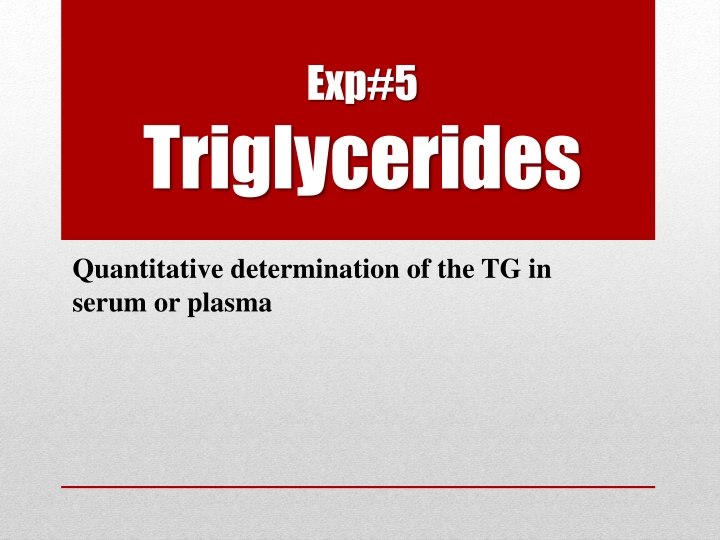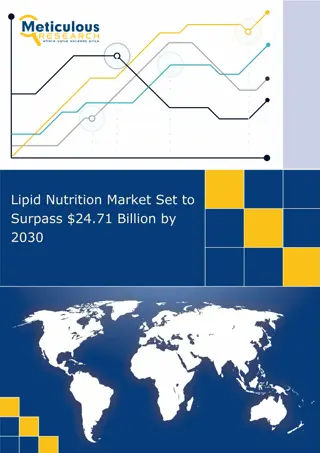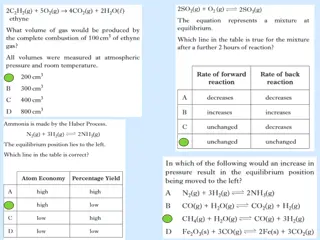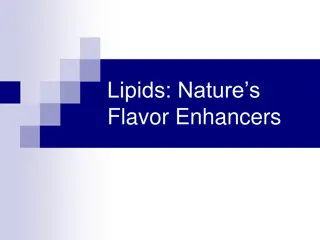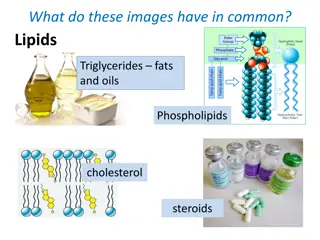Triglycerides
Triglycerides (TG) are a major type of lipid involved in energy storage, found in droplets within cells. Elevated levels of triglycerides can indicate various health conditions such as atherosclerotic disease and hyperlipidemia. Testing for triglyceride levels is often done in conjunction with cholesterol testing to assess the risk of cardiovascular diseases.
Uploaded on Feb 18, 2025 | 0 Views
Download Presentation

Please find below an Image/Link to download the presentation.
The content on the website is provided AS IS for your information and personal use only. It may not be sold, licensed, or shared on other websites without obtaining consent from the author.If you encounter any issues during the download, it is possible that the publisher has removed the file from their server.
You are allowed to download the files provided on this website for personal or commercial use, subject to the condition that they are used lawfully. All files are the property of their respective owners.
The content on the website is provided AS IS for your information and personal use only. It may not be sold, licensed, or shared on other websites without obtaining consent from the author.
E N D
Presentation Transcript
Exp#5 Triglycerides Quantitative determination of the TG in serum or plasma
Lipid The major lipids of the body (TG,FA, cholesterol, phospholipids and glycolipids) *They serve as: -Source of fuel. -Important component of cell membranes and cells structures. -They provide stability to the cell membrane and allow for transmembrane transport. -They are transported through the blood stream in the form of lipoprotein
Fatty Acid Fatty Acids: The lipid building blocks. Fatty acids are composed of a chain of methylene groups with a Carboxyl functional group at one end.
Glycerol Glycerol is a tri-hydric alcohol (containing three - OH hydroxyl groups) that can combine with up to 3 fatty acids to form mono-glycerides, di- glycerides, and tri-glycerides
Triglycerides TG consist Glycerol and 3 FA, it s major type of lipid used for energy storage. It s found in droplets within the cytoplasm It s non-polar and relatively insoluble
Source The source of TG in the body can be either: dietary or synthesized in liver and other tissues. TG molecules allow the body to compactly store long carbon chains(FA) for energy that can be used during fasting states between meals.
Clinical significance Elevated levels of both cholesterol and triglycerides indicate to: -Atherosclerotic disease -hyperlipidemia can be inherited traits or they can be secondary to a variety of disorders including DM, nephrosis, biliary obstruction and metabolic disorders associated with endocrine disturbances
Usually, TG conc. is requested either in combination with total cholesterol or as part of lipid panel examination (cholesterol, TG, HDL, LDL) To estimate the degree of risk for: -hyperlipoproteinemia -coronary artery disease -Heart disease and stroke.
Principle *Quantitative enzymatic method: TG +H2O glycerol + FA. Lipase Glycerol kinase Glycerol +ATP G3P+ ADP GPO G3P+O DAP+ H O peroxidase H O +4AAP+4-Chlorophenol Quinoneimine+2H2O
*AAP= aminoantipyrine *GPO=glycerol-3-phosphate oxidase The amount of the dye formed is directly proportional to the conc. of TG in the sample *Specimen: Fresh, non-hemolyzed serum( Fasting better) TG in serum appears stable for 3 days when stored at 2-8 c
Procedure Balnk Std Test WR-ml 1 1 1 Std- l --- 10 --- Sample- l --- --- 10 Mix and incubate at 37C for 10 min then read A at505 nm against blank Final color is stable for 30 min at RT
Calculation A test X Conc.of std(200mg/dl) = TG in test (mg/dl) A Std
Normal Range According age more than those values indicate hyperlipidemia 0 - 29 years ......... 10 - 140 mg/dl 30 - 39 years .......... 10 - 150 mg/dl 40 - 49 years .......... 10 - 160 mg/dl 50 - 59 years ......... 10 - 190 mg/dl
Interferences Some lab mistakes lead to falsely elevation of TG level: Glycerol in rubber stoppers or in contaminated glassware. -Lipemic or grossly icteric -Samples with gross hemolysis or high bilirubin values -A number of drugs and substances affect the measurement of triglycerides
Icteric Lipemic Hemolysis
Limitation This reagent is linear up to 1000 mg/dl Triglycerides. Samples with values above 1000 mg/dl should be diluted with water, re-assayed and the results to be multiplied by 2
